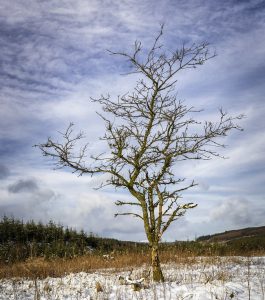Community
Introduction

“Naked” by TrotterFechan is licensed under CC BY 2.0
The Anishinaabe First Nation in the novel is strong and resilient although most of the members of this community are still dealing with the past and present effects of colonialism. Community in this story is also about the strength of family and cultural ties in a time of crisis.
Curriculum Connections
Social Work, Anthropology, Sociology, Education, Literature Studies, Indigenous Studies
Relevant quotes from the author
 When Things Start to Fall Apart: Andrew Wilmot in Conversation with Waubgeshig Rice
When Things Start to Fall Apart: Andrew Wilmot in Conversation with Waubgeshig Rice
“I only ever wanted to tell this story from the perspective of the people in the community. It was really important to me to give the Anishinaabe characters the primary voice because I wanted to highlight their sense of community and relationship with the land as a means to survive.”
 Dystopian novel pays ‘homage to the everyday people on reserves across Canada’
Dystopian novel pays ‘homage to the everyday people on reserves across Canada’
“It’s an homage to the everyday people on reserves across Canada. Those are the people that I don’t think get as much attention as they should because they’re laying the foundation or upholding the foundation of community just by being themselves and trying to live on the land in a good way and trying to bring culture back.”
 Waubgeshig Rice: There are shreds of promise in what’s smouldering. Interview by Will Johnson
Waubgeshig Rice: There are shreds of promise in what’s smouldering. Interview by Will Johnson
“In the end though, despite all the death and despair this community experiences, they ultimately come together when they need to. And the spirit of survival is strong, thanks to everything they already endured as a result of colonialism. I believe in the resilience of Anishinaabe people and Indigenous nations as a whole.”
From the Novel
Gathering wood was a year-round process on the rez. People went into the bush to cut down spruce, oak, and maple to bring home for their own use or to sell. The band employed its own crew to provide wood for the elderly and others who needed help, and Evan brought any leftover wood home whenever he could. (pages 32-33)
Aileen was sitting at the kitchen table, sipping from the tea she had promised Evan. She still had an old wood cookstove in her kitchen and she could handle keeping it stoked, but she was too frail now to load the furnace in the basement. The main floor was toasty and it comforted Evan to know that Aileen was okay. He took off his jacket and placed it on the back of the wooden chair across from the elder. She put down her cup and smiled at him through her big glasses. “Everything okay down there?” she asked. Evan looked down at the full cup in front of him, then to hers. She had wrapped her thin, wrinkled fingers around the hot glass for warmth. The sleeves of her pink sweater were fraying at the end.
“Yeah, everything looks good. You got lots of wood still,” he replied. “Izzy will be by tonight to top it up.”
“I really appreciate you boys doing this for me. Chi-miigwech.”
“It’s nothing, Auntie. We’re happy to help.” (page 146)
Discussion Questions
1. Compare the community depicted in the novel to what you have seen or heard about First Nations in Canada. How are they similar and/or different? Where have some of your ideas about First Nations communities come from?
2. In what ways are members of this community equipped to deal with the aftermath of the blackout due to having been subjected to colonialism? In what ways are they challenged?
Activities
- Today in Canada, remote First Nations communities have varied levels of access to technology and infrastructure. Members of the First Nation in this book use computers, have Internet, and cell phone service. Some families though, such as Evan’s, hunt and fish to put food on the table. Find a remote First Nations community on this
 map and research the community resources including transportation access, schools, and water. Are you surprised at the quality of infrastructure the government provides (which is a treaty right and responsibility through the Constitution)? In what ways is the community different from your own?
map and research the community resources including transportation access, schools, and water. Are you surprised at the quality of infrastructure the government provides (which is a treaty right and responsibility through the Constitution)? In what ways is the community different from your own?

